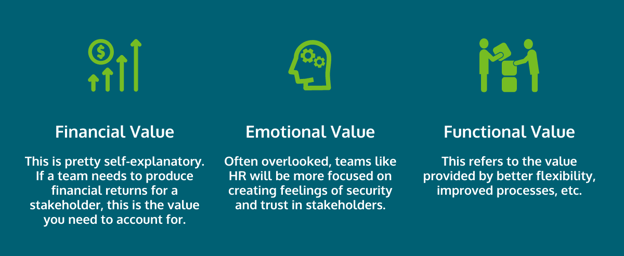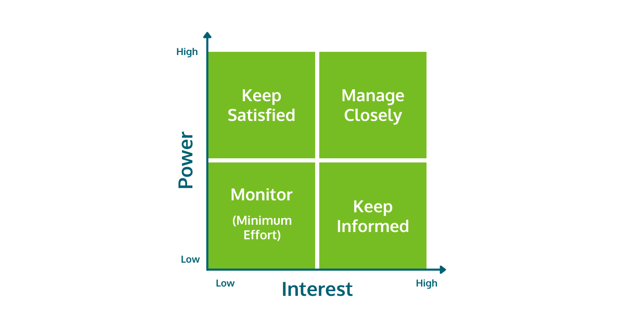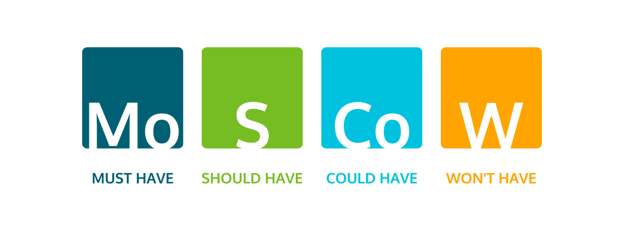We can admit that prioritization isn’t a very “sexy” topic in the business world, but it’s at the core of how your organization makes decisions and delivers value. Your teams can be incredibly optimized and effective, but if they’re prioritizing the wrong thing, those strengths are mostly going to waste.
That’s why you need to be thinking about how you prioritize now. Because if you can’t answer that question off the top of your head, you’re probably not giving prioritization the attention it deserves. Luckily, we’re about to equip you to understand how you prioritize now and how you can improve that process, start down the road of Agile project management, and ultimately make your organization more effective by embracing business agility.
Start by Understanding How you Prioritize Now
If you’re unsure, the best place to start is by devoting some time to really understanding how your teams prioritize now. This doesn't require a lot of Agile marketing training, just a few questions and some careful thought. The first question to answer is whether your teams are using a specific prioritization method or are simply doing it ad hoc.
Begin by asking team leaders or managers about their approach. If they aren’t sure, you can try presenting some hypothetical scenarios and asking how they would approach them. Alternatively, you can go through a recent real example and ask about the thinking that went into the prioritization decision.
Even at this early stage, you’re communicating to team leaders that prioritization is, as one might expect, a priority. They should view it as an important process and not an afterthought. However, you still need to equip them with a process, but we’ll get to that later.
Once you understand how your teams approach prioritization, it’s time to determine how well that approach delivers stakeholder value.
Conduct a Stakeholder Analysis
As easy as it is to simply say, “I know who my stakeholders are," it’s vital to take the time to understand precisely who they are, their interests, and how they can provide input on how you’re delivering value to them.
Determine Who Your Stakeholders Are
Any specific project or team can have both internal and external stakeholders. These may be investors, customers, or even another team within the organization. Be sure to take some time and really think about who your stakeholders might be, instead of writing down the most obvious one and calling it a day.
Understand their Interests
You’ve identified them, but what do those stakeholders actually want? Like before, this answer may seem simple at first, but there are actually three types of value you can deliver to meet their needs:

Team leaders should speak with each stakeholder and determine what types of value they would like. Also, bear in mind that the value stakeholders want might change, which is why the last step – functional value – is so important.
Consider how They Will Be Integrated Into Your Process
Once you’ve identified who your stakeholders are, as well as the kind of value they want from your teams, you can consider how to incorporate that information into your prioritization process. As noted, this is vital, because ongoing stakeholder feedback is critical for honing your prioritization process over time.
After all, imagine if a restaurant determined its customers wanted better value and responded by lowering the prices of everything with less expensive ingredients. If they stopped getting feedback from those customers, they might assume the price changes were successful. But it’s possible customers dislike the changes. The only way to know is to keep the feedback coming.
One way to approach multiple stakeholders is by creating a matrix comparing their levels of interest and influence. This will help inform teams on how to structure interactions and input from them. Some stakeholders might require weekly or monthly meetings, while others might just want an update email once a quarter.

Use That Stakeholder Analysis to Formalize a Prioritization Process
At this point, your teams know who their stakeholders are, what value they want, and have some idea about how they can integrate stakeholder feedback into their prioritization process. Now you should have all the information you need to choose a formal prioritization process. Here are some options.
Stack Ranking
This technique is about as simple as it gets: listing work in order of priority, whether on a Kanban board or another accessible to-do list.
However, an uncomplicated strategy like stack ranking can be somewhat limiting as the focus is placed largely on the value activities will deliver, while the effort needed to accomplish them can be left out. It’s also easy to end up with an ever-expanding backlog that needs frequent refinement. So while this methodology is great for its accessibility and simplicity, there are more robust options.
MoSCoW
This prioritization method breaks tasks down into four categories:

MoSCoW begins with the kind of stakeholder analysis discussed above. Once teams and stakeholders are aligned on their objectives, the teams should develop a system for resolving any disputes. It’s best to do this before those disputes arise to help avoid drawn-out conflicts (luckily, priority poker can help).
The next step is for the team to decide what percentage of its resources should be allocated to each of the four categories above. Or, the team can place projects in their corresponding categories and then decide what they have the capacity for.
Priority Poker
Another approach is playing a version of planning poker. Don't worry, there's no gambling involved. So this approach works for startups and regulated industries like BFSI alike.
This strategy gamifies the process of determining how much effort will be needed to accomplish tasks, thereby helping teams improve the accuracy of their estimations over time. Those estimates can then be balanced with the estimated value produced to determine the best prioritization for a set of tasks.
This is useful to incorporate into your prioritization process if your teams consistently make mistakes when they estimate what will be required to complete a task or project.
Agile Prioritization
First, the good news: any of the methods mentioned here can be incorporated into a broader Agile prioritization strategy. We actually use some stack ranking and MoSCoW here at AgileSherpas. But an Agile approach brings a few key added benefits.
For example, if you’re using Kanban or a hybrid approach, you can use classes of service to aid in prioritization. This system divides work into four priority classes: expedited, fixed delivery date, standard, and intangible. Service level agreements are another way to create alignment with stakeholders on priorities.
Whichever combination of strategies you use, tying them together with a broader work management approach – designed to focus organizations and teams alike on delivering stakeholder value while avoiding getting bogged down with unplanned work – helps tremendously. Of course, any team can spend the time to understand how to prioritize based on this kind of value, but when they’ve cultivated a truly Agile mindset, it becomes second nature.
Combining the Class of Service mindset with Agile’s focus on continuous improvement, it’s easy to see why the best overall approach for better prioritization is to go Agile.
Consider How Else You Can Improve Processes Through Business Agility
Obviously, there are a multitude of ways to improve how teams in your organization prioritize. The trick is finding one that can easily integrate into your team's work. If you’d like to do that through Agile methods, you can get your team leaders started on that path with either self-paced or instructor-led courses in Business Agility Fundamentals.
These courses will equip your leaders with everything they need to apply Agile principles to improving key processes like prioritization.